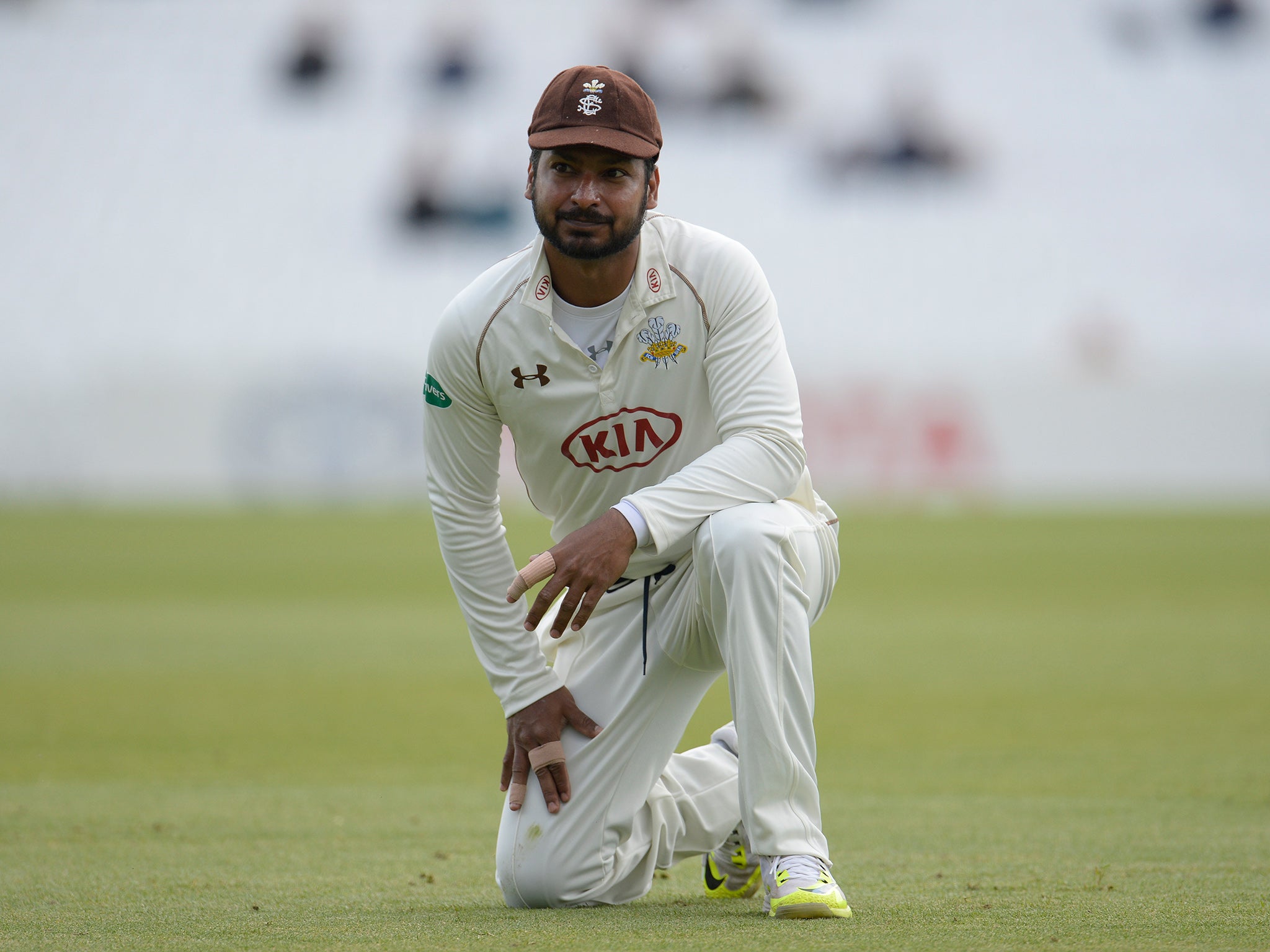Outside Edge: It would be foolish to think Surrey can't turn things around
COMMENT: It is too soon perhaps to be writing off Surrey’s season, especially with Kumar Sangakkara in the ranks

It is frequently said that making the jump from Division Two of the County Championship to Division One is difficult to do well. There have been numerous instances of clubs gaining promotion then returning immediately – or within a couple of seasons – to the lower tier. Many current and former professionals have talked of a gulf in consistent quality between the divisions.
The fortunes of the two sides which gained promotion last season could not be more contrasting. Surrey, Division Two champions and long-time underachievers, looked to be on a steady upward curve – but this year, after six matches and no wins, they are bottom of the pile and looking like a yoyo in the making. Lancashire meanwhile, who some predicted would struggle this season, are leading the Championship with three wins out of five.
Their meeting at Old Trafford this week was symbolic of their differing predicaments. After winning the toss, Surrey failed to reach 200, conceded a hefty first innings lead and were bundled out again to lose by an innings.
Surrey’s cause hasn’t been helped by injuries, notably to Zafar Ansari and more recently to Ravi Rampaul and Rory Burns. Still, the bowling in particular looks relatively lightweight – Tom Curran and Ravi Rampaul are the only bowlers to have taken more than ten wickets. Chatter among supporters shows concern at the perceived failure of new coach, Michael Di Venuto, to outline a clear strategy for the season; some are even calling for Gareth Batty to be replaced as captain.
It is too soon perhaps to be writing off Surrey’s season: with Kumar Sangakkara in the ranks, it would be foolish to think the team can’t turn things around. There are also plenty of exciting young players at the club with huge potential. But they need to be astutely guided, or confidence will soon drain away. If that happens, recapturing the brilliant form of last year will become ever more difficult.
Crane towers over everyone
Surrey supporters might draw some comfort from Hampshire’s victory on Wednesday against Nottinghamshire – not least because it followed hot on the heels of a thrashing by Lancashire.
The men of the Ageas Bowl are a largely unstarry bunch and looked set to be even less so when overseas player Fidel Edwards broke his ankle in a warm-up game of football last month. His replacement by fellow West Indian Tino Best raised a few eyebrows – which reflects the fact that he is remembered as much for being wound up by Andrew Flintoff when batting against England, as for his international bowling exploits. In fact though, the ebullient Best has proved a hit and his 4-47 against Notts was key to victory.
More excitingly for England fans, Mason Crane also chipped in with six wickets in the match, taking his tally to the season to 10 from three matches. As a leg-spinner, he is precisely the kind of bowler the ECB intended to assist by the no-toss trial. He is also just the kind of bowler crickets fans crave to see – for if there is anything more wonderful than watching a very fast bowler in full flight, it is watching a leg-spinner befuddle an opposition. Best himself reckons that Crane is behind only Shane Warne and Stuart MacGill among leggies he has played with or against.
Since he is only 19, there is a danger in getting carried away about Crane. But he spins the ball hard, has a simple action and deceives batsmen both in the flight and off the pitch. His googly is very well-disguised. From an England point of view he might be one for the future – but a future which perhaps isn’t very far away.
It remains a mystery why ODI's follow Tests
Ben Stokes' injury is a huge blow to him, and to miss a Test at his home ground will hurt even more. Yet it is hard to believe his absence will hugely harm England’s chances against a modest Sri Lanka in the second test.
Having spent four hours travelling to Headingley last weekend, I saw – either side of a lengthy break for rain and beer – an inexorable defeat for the tourists, for whom only Kusal Mendis showed any appetite to get stuck in. If James Anderson continues his current form at the Riverside, there seems little hope for Angelo Matthews’ men, who for the most part just don’t have the necessary experience in these early-season English conditions.
Some have argued that there is little point in playing Tests at this stage of the summer. The conditions at Headingley certainly weren’t conducive to a five-day contest. It is still something of a mystery to me that ODIs must always in this day and age follow a test series, which feels intrinsically peculiar if Tests are supposed to be the main feast, rather than an appetiser.
Moreover, the success of the Super Series concept currently being trialled relies in large part on there being something to play for towards the end of the multi-format contest. It would surely be much more likely, in light of the way points are weighted (two for an ODI or T20 win compared to four for a test win), for a Super Series to be in the balance if the shorter matches came first.
Subscribe to Independent Premium to bookmark this article
Want to bookmark your favourite articles and stories to read or reference later? Start your Independent Premium subscription today.

Join our commenting forum
Join thought-provoking conversations, follow other Independent readers and see their replies